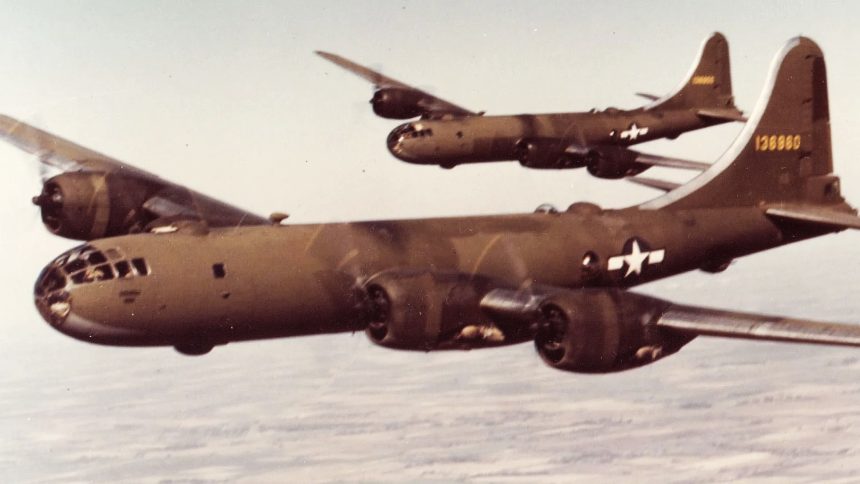Suffering an arduous start in the CBI Theater, the B-29 would initially struggle to prove its worth, the victim of teething problems from its rapid development and production, along with supply issues once in theater.
Originally designed as a high-altitude precision strategic bomber for daylight raids, the Boeing B-29 Superfortress was included in the plans for the war against Germany and the Axis powers in Europe. However, delays continued until the war in Europe ended, resulting in the big bomber being deployed exclusively against the forces of the Empire of Japan beginning in the China Burma India Theater.
We’re going to need a Bigger Bomber
On Feb. 5, 1940, an official letter containing an ambitious proposal calling for a bomber with a range of over 5,000 miles, and a larger bomb load capacity along with higher speeds than the current Boeing B-17, landed on the desk of Boeing‘s President, Philp G. Johnson. Making the proposal even more of a challenge, initial designs were to be submitted in 30 days.
Four firms responded with engineering designs: Boeing, Lockheed, Consolidated, and Douglas. On Apr. 4, the participating bidders were asked to resubmit proposals including leak-proof fuel tanks and/or armor protection along with additional heavier defensive armaments after it was discovered European nations were doing the same.
Two proposals, one from Lockheed, the other from Boeing, were initially favored in May of 1940. Boeing’s proposal, known as the Model 345, was unofficially preferred over Lockheed’s entry.
Boeing’s 345 would feature a pressurized cabin which would be the first purely military designed aircraft to do so, and carry a ton of bombs 5,333 miles at a cruising speed of 290 mph. An 11-12 man crew would man the four-engine aircraft carrying four remotely controlled retractable turrets each with twin .50 caliber machine guns along with a pair of .50 caliber machine guns in the manned tail turret along with a 20 mm cannon. The undercarriage would consist of tricycle landing gear sporting twin wheels all around, another military aircraft first. The Army Air Corps (AAC) designated the large aircraft the XB-29.
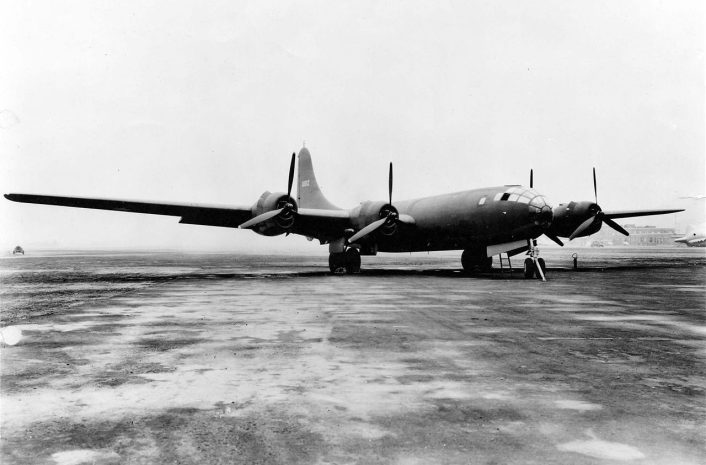
In June, General Henry ‘Hap’ Arnold authorized the production of mock-up aircraft from Boeing and Lockheed, as well as the delivery of prototypes to Wright Field, Ohio for testing. Boeing had completed design on the aircraft by Aug. 24, and Arnold ordered two XB-29 prototypes. Earlier in April, Arnold had placed General Kenneth B. Wolfe in charge of the B-29 project.
Boeing’s proposals were ahead of the competition as the company had been working on heavy bomber designs since the failure of the XB-15. One design, the model 341, produced a mockup aircraft with specifications very close to those laid out in the AAC requests in Feb. 1940. Lockheed would eventually bow out of the competition in order to concentrate on pursuit aircraft, and their XB-30 proposal would never fly. Consolidated was awarded a parallel contract on its XB-32 design that would eventually be produced as the B-32 Dominator.
Two XB-29s would be ordered in September, with a third being ordered in December after the Boeing plant in Seattle, Washington, was visited by an impressed board of officers examining a wooden mockup of the B-29. Before the prototypes flew, an order for the B-29 was placed by what was now known as the United States Army Air Force (USAAF), the first time a military aircraft had been ordered into production right off the drawing board. When America entered the war after Pearl Harbor, B-29 order numbers were increased, and by the time the first prototype flew in Sept. 1942, 1,664 Superfortresses had been authorized.
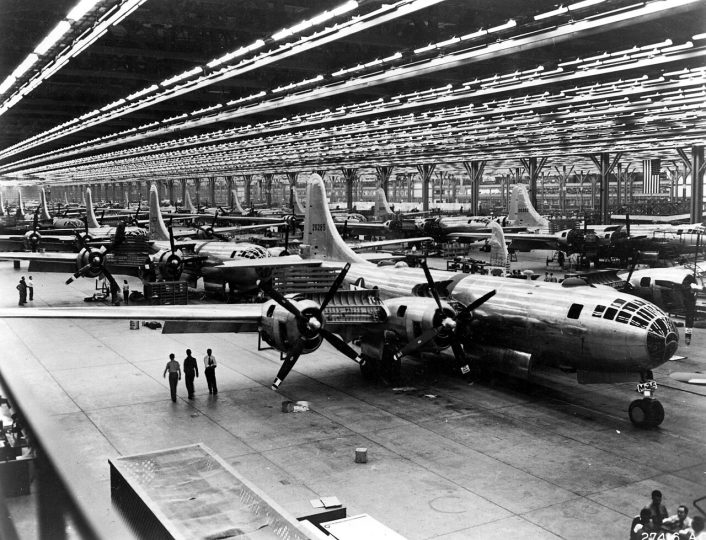
The production model would be powered by four Wright R-3350-23 Duplex-Cyclone 18-cylinder air-cooled turbo supercharged radial piston engines generating 2,200 hp each. This gave the 99 ft long 27 ft 9 in high aircraft with a wingspan of 141 ft 3 in a top speed of 357 mph and a range of 3,250 miles. The service ceiling was 31,850 ft for the big bomber crewed by 11 men.
Big Trouble in China
The Japanese home islands were out of range of American bombers throughout most of the early years of the war due to the vast conquests made by the Japanese Empire. Captured swaths of land, islands, and control of the seas prevented the Allies from bombing Japan itself, other than the April 1942 Doolittle Raid utilizing carrier launched B-25 Mitchell twin-engine bombers.
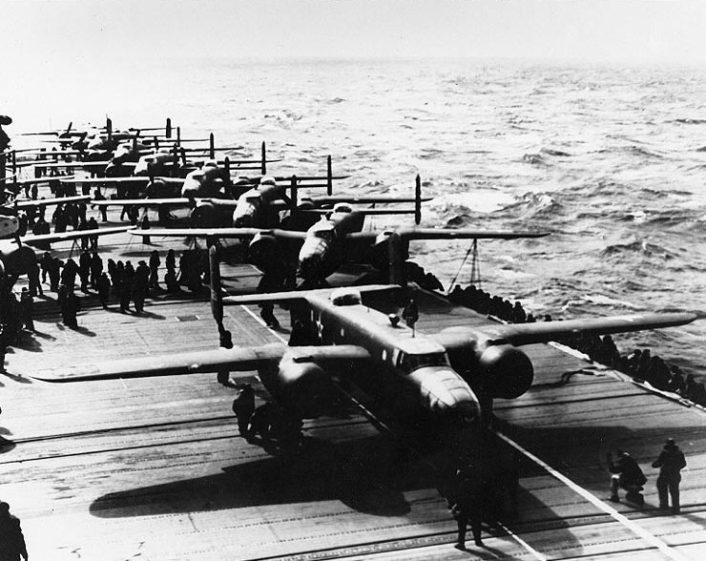
The raid was a morale booster for the Americans, but the Chinese would pay the price. Many of the raiders would end up in China after the raid and were aided by the Chinese. The Japanese exacted a heavy toll on China and as a result drove 200 miles inland through East China, devastating 20,000 square miles and torturing and killing anyone even remotely suspected of aiding the Doolittle raiders. President Franklin Roosevelt was determined to continue to supply China and keep her in the war, as well as find a way to strike back at the Japan’s war industry.
In August 1943, General Arnold presented an ‘Air Plan for the Defeat of Japan’ which outlined the first policy of using the B-29 strategically and organized in four groups, to a conference of Allied leaders. The plan included deploying B-29s to Central China, possibly around Chengtu. The extended range of the bomber meant some of Japan’s war making industries could be targeted, along with vast amounts of territory Japan held. Arnold envisioned eventually deploying 780 B-29s to the China Burma India (CBI) Theater and destroying Japan by decimating her war industries therefore preventing a costly seaborne invasion by the Allies.
The ambitious plan had no overland supply route, so in support, bases would be upgraded to accommodate the bombers and other large aircraft that would carry supplies over ‘The Hump’ (Himalayan Mountains) to China, and several B-29s were converted to transports. General Joseph Stilwell would modify the plan of permanently basing the Superfortresses in China, and instead Calcutta (Kolkata), India would be the base for the aircraft and the port of entry for fuel, bombs, and other war materials needed to support the B-29s, while Chinese airstrips would be used for staging attacks or returning aircraft. British assistance provided bases for the bombers around Calcutta, while in China; Chiang Kai-shek was persuaded to begin construction of staging bases there. The plan became known as Matterhorn.
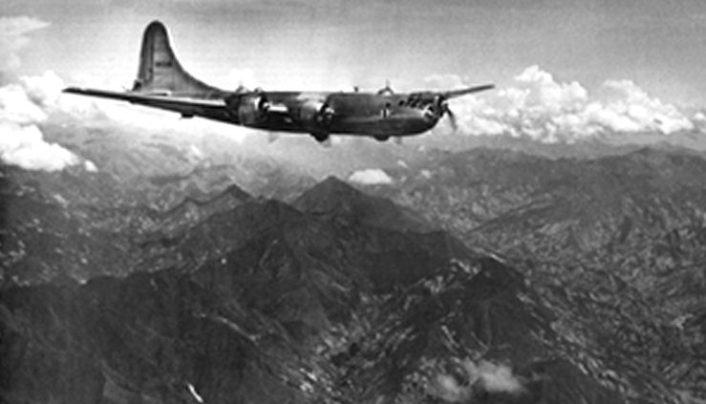
Earlier ideas of basing B-29s in the Aleutian Islands and striking Japan had been scrapped due to the hostile and unpredictable weather along with constant fog found during the air campaigns over Attu and Kiska. Attempts were also made by President Roosevelt to station B-29s in the Soviet Union once they entered the war against Japan, but constant delays prevented that from ever happening.
The Battle of Kansas
In early 1944, President Roosevelt, planned to do all he could to keep China in the war and wanted to get the new bombers based and operational in the CBI, but a constant and maddening succession of accidents including the fatal crash of the second prototype, delays, and malfunctions all thwarted those plans.
Boeing was attempting to bring an aircraft from the drawing board to production in an unconventional way and in record time. Issues with engines overheating, bugs in the remote-controlled armament and turrets, electrical failures in the aircraft’s 10 miles of wiring, distorted glass panels, engines overheating and catching fire, pressurization leaks, and a slew of other issues had led to the need for several modifications to the aircraft, slowing production. In addition, previously Boeing had to construct a new facility to build the giant plane, and hire and train an entire workforce, most of which had little or no experience.
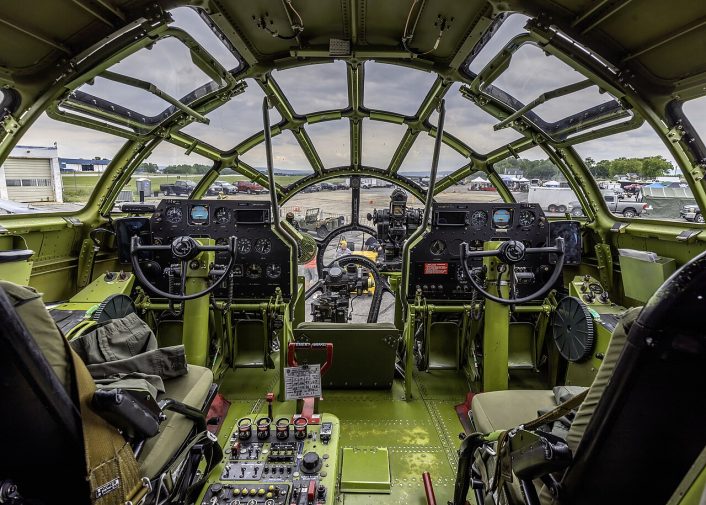
General Arnold had visited the Wichita plant on Jan. 1, 1944, and wanted 175 B-29s ready for combat by the first of March of that year. Two months later, Arnold would realize that, out of 97 planes produced, only 16 were flyable and not a single B-29 was combat ready. Most were in various modification center locations waiting for parts and modifications. The parts and supply system was in complete chaos. In March 1944, Arnold, angry and frustrated with the situation, placed General Bennett Myers in charge of getting the modifications complete and the planes ready for war. The ‘Battle of Kansas’ sometimes referred to the ‘Battle of Wichita’, or the ‘Kansas Blitz’ ensued, with remarkable achievements.
Ground crew and specialists were called in from all around the country, workers were pulled from the assembly lines and subcontractors were told to focus only on B-29 components. Soon parts and components began to flow into Kansas by aircraft, train, and truck.
Each B-29 had to be modified in order to become combat ready. The wing structures needed modifications requiring the skins removed and riveted back once the modifications completed. The poor quality clear panels in the noses had to be replaced panel by panel and pressurization insured. Every electrical connection, a total of 586,000 per aircraft, had to be disassembled and resoldered, as faulty connectors had been installed initially. Cowl flaps that controlled airflow around the engines would also be modified. The engines themselves had to be pulled out of the aircraft and either replaced or modified to the new R-3350-23A standard that included rebuilding them with added baffles for better airflow over the engines along with new exhaust valves being installed.
New rocker arms with improved oil flow due to small holes being added replaced the solid arms originally installed. New engine sumps and modified nose casing improved oil flow as well. Four-bladed propellers replaced the original three-bladed props of the prototype aircraft. The rudders were replaced with strengthened units, new landing gear tires installed, long-range fuel tanks fitted to the bomb bays for the journey to India, and the main landing gear legs reinforced. New AN/APQ-13 radars were also fitted to the bombers with several issues to work out.
Much of the work was being done around the clock in sub-zero temperatures and snow storms on the Kansas prairie near Wichita at the Boeing facilities or surrounding Army airfields, either outside or in non-heated structures. Workers performing tedious tasks could only work for about 20 minutes at a time to prevent frost bite to their hands and fingers.
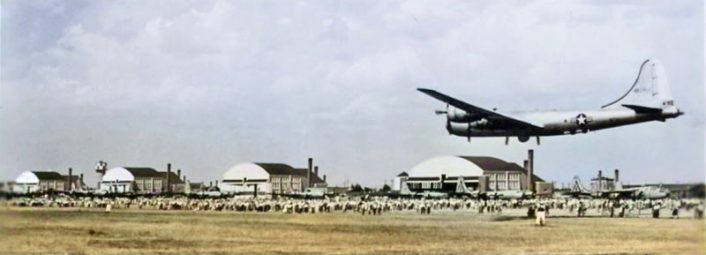
Nearby Army airfields at Salina, Kansas (Smoky Hill), Great Bend, Kansas, Victoria, Kansas (Walker), and Pratt, Kansas, would provide training and support for the planes, with Salina being the departure point for India. Herrington Army Air Field, Herrington, Kansas would process B-29s and crews prior to leaving for overseas.
Amazingly, in late March, the first certified for combat duty B-29 was delivered to the 20th Bomber Command and departed on the 11,530 mile trip to India. In the weeks to follow a steady stream of B-29s would depart Salina for India, with around 150 of them arriving by Apr. 15, 1944. The ‘Battle of Kansas’ had been decisively won.
Bombing from the CBI Theater
In the meantime, airfields had been under construction in both India and China, mostly by hand with little or no machinery or equipment. The bases in China would be devoid of concrete — rocks manually broken and crushed with hand tools and hauled by Chinese workers in baskets, buckets, and wheelbarrows would cover the runways.
Thousands of Chinese wheelbarrows moving at once created a nerve-racking noise as they all squeaked. On one occasion, American engineers lubricated the axles of the offending wheelbarrows while the Chinese workers had lunch. When they returned to work, the workers all stopped working after realizing the squeaks were gone. Mystified, the Americans soon discovered that the Chinese believed the squeaks chased the devil away. After an extensive de-greasing effort, work resumed.
Four 8,500 feet long strips of crushed rock 19 inches thick had been placed near Chengtu. The strips were sealed with tung oil being packed with huge stone rollers weighing up to ten tons that were manually pulled along the strips, gaining momentum and at times crushing unfortunate workers that had tripped and fallen.
In India an American maintenance unit would eventually be pulled from the Burmese jungle and take the place of thousands of workers trying to move 1.7 million cubic yards of earth using only wicker baskets they carried on their heads. Five concrete strips 8,500 feet long and ten inches thick would be put down.
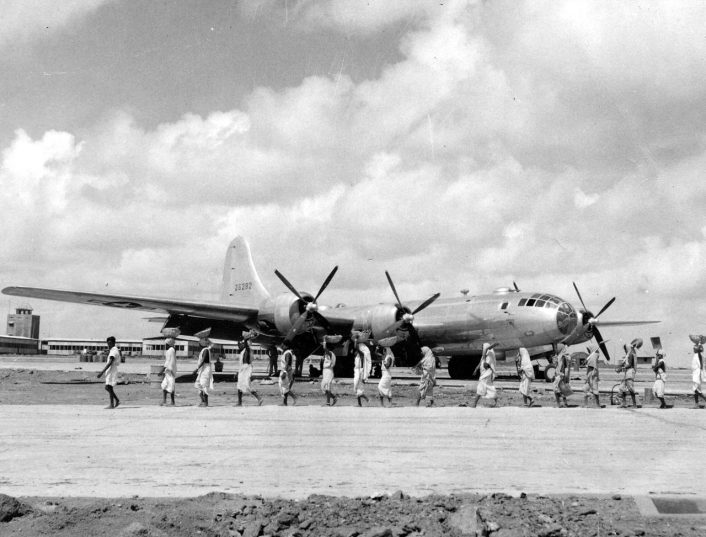
The B-29 would be under the control of the newly created 20th Air Force and General Arnold in order to insure its use for strategic assignments, as other services and generals had their own ideas for utilizing the bomber. The Navy for instance, desired to remove the aircraft from its strategic purpose and use it for anti-submarine warfare and reconnaissance. General Claire Chennault of Flying Tiger fame and now in command of the 14th USAAF in China wanted to use the heavy bombers to destroy Japanese air power in the region and push back a Japanese offensive aimed at preventing the bombing of Japan. General MacArthur wanted the B-29s used in the Southwest Pacific.
However, the USAAF had in mind bombing Japan itself and her war-making capabilities. The strategic role had been established, putting pressure on the aircraft and crews to provide immediate results despite constant supply issues.
Flying fuel over the Himalayas in specially equipped B-29s to supply the bases in China proved not very efficient. With favorable winds, it would take two gallons of fuel burned to deliver one gallon of fuel to the bases. With a bad headwind it could cost as much as twelve gallons burned to deliver one gallon.
Finally in early June after tremendous transport efforts led by General Wolfe, enough supplies were finally in place for an initial raid to be launched from the bases in India. On Jun. 5, a shakedown mission was launched against the Makasan railroad yard at Bangkok, Thailand.
A force of 98 Superfortresses left eastern India for a 2,000 mile round trip. Fourteen aborted due to mostly engine problems before reaching the target. The target was overcast and the planes would have to bomb by radar. The bombers struggled to stay in their four-plane diamond formations and became confused, dropping their bombs at the wrong altitudes and only 18 bombs landed near the target. Although none of the bombers were lost to enemy aircraft or anti-aircraft fire, five B-29s crashed on landing or ditched in the Bay of Bengal, and 42 others were forced down at bases they were not assigned to as fuel became short. The raid was considered a disaster.
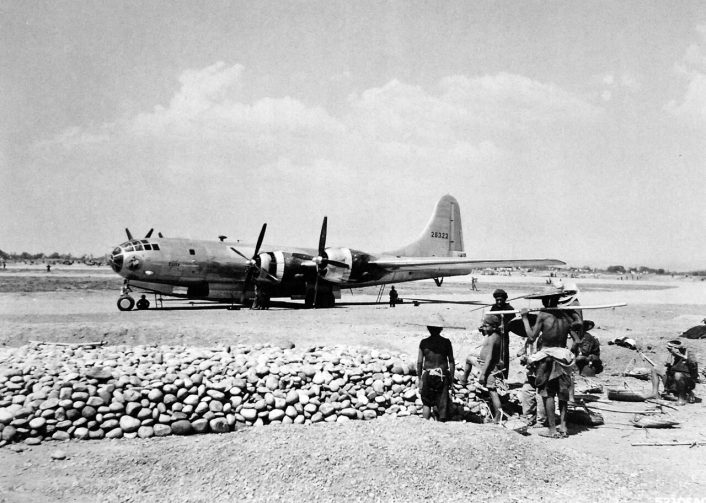
Arnold wanted to hit Japan itself, the first such attack since the Doolittle Raid over two years previously. By Jun. 14, Wolfe had 83 B-29s at the Chengtu bases. Another supply effort had been undertaken and a raid planned to hit the iron and steel works at Yawata, Japan on the island of Kyushu. Intelligence estimated 24 percent of Japanese rolled steel was produced here.
Late in the day on Jun. 14, 75 Superfortresses, loaded with two tons of bombs each, began taking off. Seven of the planes were not able to get airborne, one crashed after take-off, and four other aircraft were forced to return due to mechanical issues. The remaining 63 aircraft continued on toward Yawata unaware they had been picked up by Japanese radar on an island off the coast. The Japanese would be ready for their uninvited visitors.
The first B-29s would arrive over the target near midnight, only to discover the entire city blacked out. As more bombers arrived, Japanese searchlights lit up the sky and flak batteries opened up. Six bombers were hit with minor damage. Japanese fighters added to the chaos making passes at the B-29s but not scoring hits.
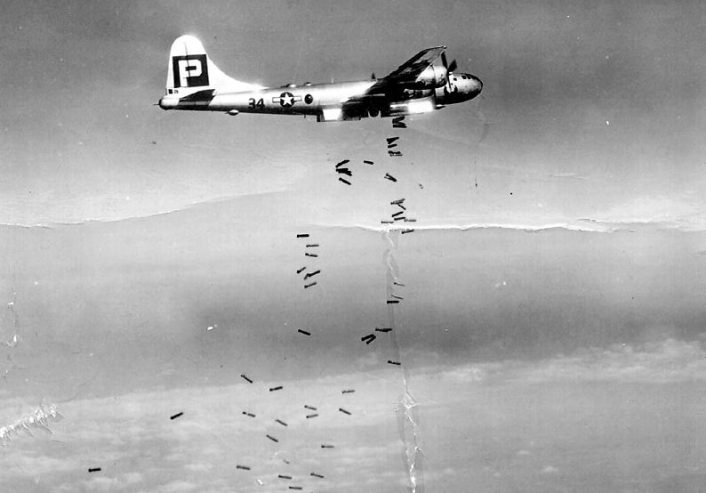
Bombardiers on several of the planes could not see their targets and attempted to bomb using radar, while others tried to bomb visually. Twenty-one failed to bomb the primary target, seven attempted to hit secondary targets, and six Superfortresses had to jettison their bombs due to mechanical issues. Crews noted seeing explosions and fire on the ground below, but could not confirm the target was hit.
On the return trip home, two B-29s crashed in China, killing all on board. One B-29 went down smoking behind Chinese Nationalist lines at dawn, two hours from home. Chinese soldiers warned the crew Japanese aircraft would soon be over their location. Within 30 minutes Japanese planes swopped down on the hapless bomber, leaving it a smoking hulk. The crew, with two wounded and an accompanying newsman, took cover in a ditch and were later rescued. Seven aircraft, including one B-29 reconnaissance version, were lost with 55 men on the first B-29 mission on the Japanese islands.
Reconnaissance photographs taken three days after the raid showed little evidence of success at hitting the target. However the raid did give the Chinese hope and a morale boost, and also let the Japanese islands know they could now be hit.
More attacks on the Japanese industrial war machine were immediately planned, however once again logistics put the American bomber force in a bad position. Fuel stocks were almost non-existent, and despite General Arnold’s demands for more attacks, General Wolfe knew it was unrealistic. Wolfe would need more B-29s and a reliable supply effort. Unhappy with Wolfe’s response, Arnold replaced Wolfe with Major General Curtis E. Lemay. Wolfe was recalled to Washington D.C. on July 4, promoted, and placed in charge of Material Command.
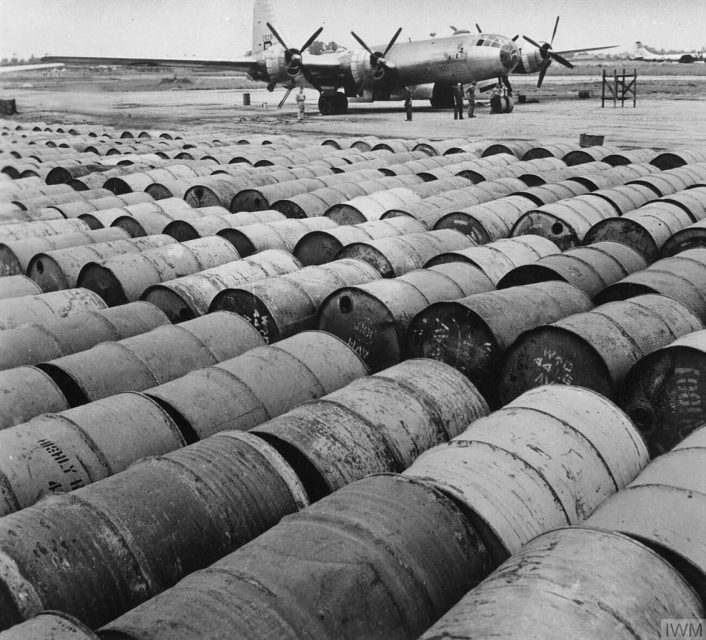
While awaiting General LeMay’s arrival, General Laverne G. Saunders was left in charge of the Superfortresses. Under Saunder’s command a third raid would be launched on July 7 consisting of only 18 B-29s against targets on Kyushu. Fifteen of the aircraft reached the Japanese island and attempted to bomb military and industrial targets at Nagasaki, Yawata, Sasebo, and Omura. Although intercepted by eight Japanese fighters over China upon return, all the planes made it back safely. Once again, the raid caused only minor damage.
Washington ordered Saunders to hit Anshan and Palembang. Sometime in July the steel-making complex at Anshan was to be hit by a 100 plane raid, but Saunders was not able to get that number of aircraft airborne. Out of the 107 B-29s, only 72 would get airborne for the attack. Heavy rains had mired down the bombers and one aircraft crashed shortly after departure, killing eight crewmembers. Eleven planes failed to reach the target, due to mechanical issues, and two of these would crash.
This left 60 B-29s to hit Anshan in Manchuria. Weather conditions were favorable with clear skies however the first bombs dropped created such a veil of smoke that the aiming point became obscured for the following bombers. Heavy flak and Japanese fighter presence downed one Superfortress with eight crew members bailing out and aided by Chinese guerilla forces. B-29 gunners claimed three probable downed enemy aircraft and four damaged. The damage done to the steel works proved disappointing. Sources vary on the date of this raid, some indicate July 9, some the 29, but the official United States Air Force serial number records indicate 42-6255 Ramp Tramp was forced down in the Soviet Union after this raid on July 20.
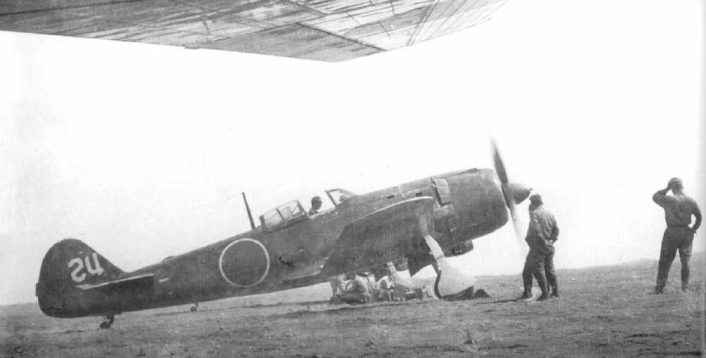
Launched from the British base of China Bay on the island of Ceylon and at an extreme distance, another strategic target was attacked on August 10. The oil refinery at Palembang in Sumatra was attacked during a night mission, involving 56 B-29s. Crews found the target blacked out and under a light cloud cover. Bombs were dropped at high altitudes by radar or visual through the patchy clouds. Eight Superfortresses also dropped mines in the waterways around the refinery. A dozen B-29s failed to make it to the target. Japanese fighters were encountered along with ground-to-air rockets, a first. No bombers were lost due to enemy action; however one went down at sea on the return trip with the loss of one crewmember. The results of the raid, once again, were poor.
The same day as the Palembang mission also saw a small force of B-29s fly a strike against the Nagasaki Engine Works on Kyushu. A total of 29 Superfortresses had left on the mission from the Chengtu bases in China, with 24 reaching the target. Again the target was obscured by cloud cover, and again the results of the raid were poor. One Japanese fighter was hit by a 20 mm cannon in the tail of a B-29, providing the 20th Bomber Command with its first official confirmed kill.
The Japanese began to see a pattern develop with the American raids, and began to bolster defenses around strategic targets. On Aug. 20, a force of 61 B-29s flew against Yawata in daylight. Losses were great — one bomber was downed by flak and three others by Japanese fighters, with one of the lost B-29s rammed by a fighter. Gunners on the Superfortresses claimed 17 enemy aircraft destroyed and 13 probably destroyed. A follow-up night raid on the same target also caused little damage. By day’s end ten other B-29s were lost to operational causes and 95 crew members dead or missing.
Throughout the raids, three B-29s would make forced landings in Soviet territory, one being fired upon by Soviet fighters and the crews finding themselves and their aircraft interned by what were thought to be allies. Another B-29 crashed in Soviet territory after the crew bailed out. Eventually American crews were allowed to ‘escape’ after being moved close to the Iranian border. The Superfortresses however would remain in Soviet possession and lead to the manufacture of a duplicate aircraft for their own air force, the Tupolev Tu-4.
General LeMay Arrives
The arrival of General Curtis LeMay on Aug. 29 coincided with Saunders making a plan for another raid on the Anshan steel works in Manchuria. On Sept. 8, 109 B-29s took to the skies with 95 reaching the target, dropping 206 tons of explosives. Four Superfortresses were lost in the raid, one to enemy fighters, the other three to operational loses. LeMay went along on the raid, and his aircraft was hit by flak but made a safe return. The results of this raid were considered the best to date.
On Sept. 9, the Japanese attacked the bases at Chengtu, damaging one B-29 and a transport aircraft. Japanese planes had been assisted by Chinese collaborators on the ground guiding them in by fires and flares.
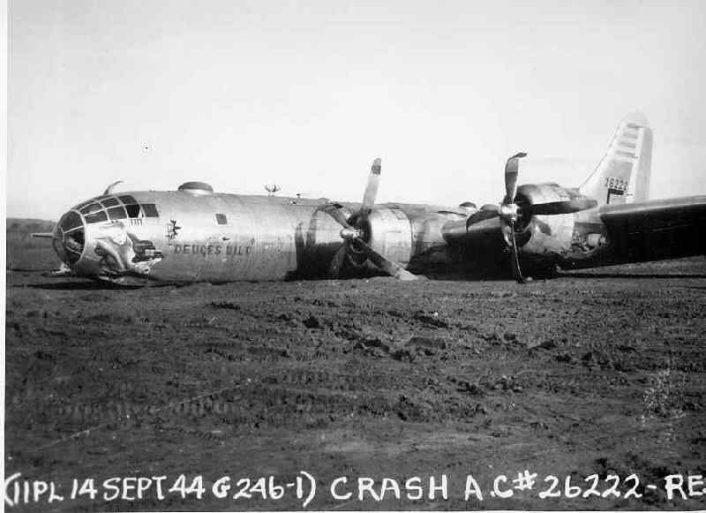
Another raid on Anshan was made on Sept. 29, finding the target obscured by weather and resulting in poor results once again. The Americans claimed downing eleven enemy aircraft while damaging several others. Nine B-29s were hit by enemy fighters, one seriously, but none lost. Late that same night, Chengtu was hit by Japanese bombers on five Superfortresses damaged, prompting LeMay to request increased fighter protection for the bases. Repeated raids by the Japanese on the B-29 bases continued, but had little effect on operations.
Raids in October and November on the Omura aircraft factory at Kyushu and the Chinese city of Nanking occupied by the Japanese utilized a two-to-one mixture of high explosive and incendiary bombs. These raids showed substantial damage and signs of success. However, the Japanese had begun dropping phosphorus explosives into B-29 formations utilizing light bombers and increasing numbers of aggressive interceptors were making the Superfortress raids from the CBI Theater more and more costly. By the end of 1944, a total of 147 B-29s had been lost.
A low-level incendiary raid on the large Japanese supply base at Hankow on the Yangtze River by Superfortresses pointed to the future effectiveness of the aircraft on Dec. 18, but it was a little too late. Soon after this raid, the Joint Chiefs of Staff (JCS) decided to move the B-29 bases to the newly captured Marianas Islands. The last major B-29 raid from the CBI Theater was on Jan. 15, 1945, hitting tactical targets on Formosa. A few minor raids continued into the end of March.
In strategic terms, and although LeMay was able to improve operations, Matterhorn had achieved very little and was very expensive with constant supply issues. A total of 49 missions had been flown, with 11,477 tons of bombs dropped. However, experience was gained and with new, more logical and workable bases in the Marianas, the big bomber would soon prove its worth.
Watch for part two of this article when we take a look at B-29 operations from the island bases and the effective fire bombing campaign.

